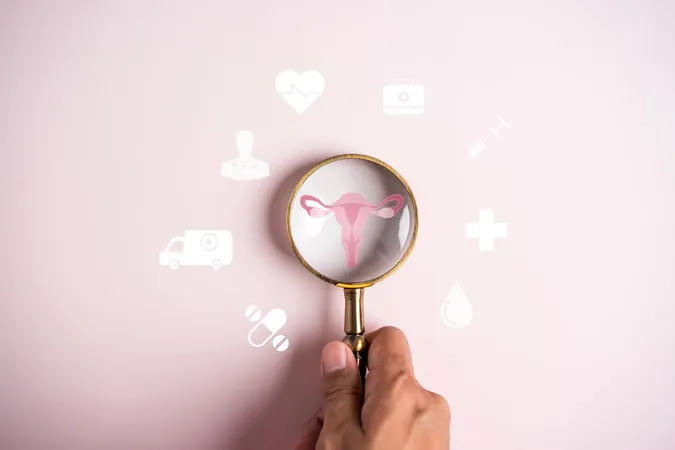
Revolutionizing Cervical Cancer Screening: The Rise of HPV Self-Sampling
2025-04-02
Author: Nur
Introduction
In a significant move towards enhancing women's health, the Society for Colposcopy & Cervical Pathology of Singapore (SCCPS) has released updated cervical cancer screening guidelines, officially endorsing HPV self-sampling as a viable alternative to the traditional methods. This shift comes in the wake of rising cervical cancer cases and the need for more accessible screening options.
The Importance of HPV and Cervical Cancer
Human papillomavirus (HPV) is a prevalent sexually transmitted infection that, while often cleared by the body, can lead to persistent high-risk types, which are known to be linked to cervical cancer. Cervical cancer has become a pressing health concern in Singapore. Recent statistics reveal that in 2023, there were 309 newly diagnosed cases and 172 fatalities, marking it as the 11th most common cancer among women in the nation.
Global Efforts to Combat Cervical Cancer
The World Health Organization (WHO) identifies cervical cancer as one of the most preventable and treatable cancers when detected early. With a global aim to eliminate cervical cancer as a public health issue by 2030, the WHO has laid out an ambitious strategy that includes: - Vaccinating 90% of girls with preventive HPV vaccines by the age of 15. - Ensuring that 70% of women undergo effective screening (such as HPV DNA testing) by the ages of 35 and again by 45. - Treating 90% of women diagnosed with precancerous cells or cervical cancer.
Benefits of HPV Self-Sampling
HPV self-sampling could significantly enhance screening rates, especially among those who may feel uncomfortable with traditional methods. This self-collection method allows women to test for HPV at their convenience, without the need for a clinical visit. Research indicates that self-sampling can improve participation in screening programs, which is crucial for early detection and treatment.
Awareness and Symptoms of Cervical Cancer
Experts advise that women stay informed about the symptoms of cervical cancer, which may include unusual bleeding, pelvic pain, or discomfort during intercourse. Recognizing these red flags and seeking prompt medical attention can be lifesaving.
Conclusion
As we look ahead, the introduction of HPV self-sampling not only empowers women to take charge of their health but also signifies a larger movement towards more innovative and accessible healthcare solutions. This evolution in cervical cancer screening methods is an exciting development that could lead to reduced incidence and mortality rates in the coming years. For women worldwide, this is an urgent call to begin prioritizing regular screenings as part of their health and wellness practices.




 Brasil (PT)
Brasil (PT)
 Canada (EN)
Canada (EN)
 Chile (ES)
Chile (ES)
 Česko (CS)
Česko (CS)
 대한민국 (KO)
대한민국 (KO)
 España (ES)
España (ES)
 France (FR)
France (FR)
 Hong Kong (EN)
Hong Kong (EN)
 Italia (IT)
Italia (IT)
 日本 (JA)
日本 (JA)
 Magyarország (HU)
Magyarország (HU)
 Norge (NO)
Norge (NO)
 Polska (PL)
Polska (PL)
 Schweiz (DE)
Schweiz (DE)
 Singapore (EN)
Singapore (EN)
 Sverige (SV)
Sverige (SV)
 Suomi (FI)
Suomi (FI)
 Türkiye (TR)
Türkiye (TR)
 الإمارات العربية المتحدة (AR)
الإمارات العربية المتحدة (AR)